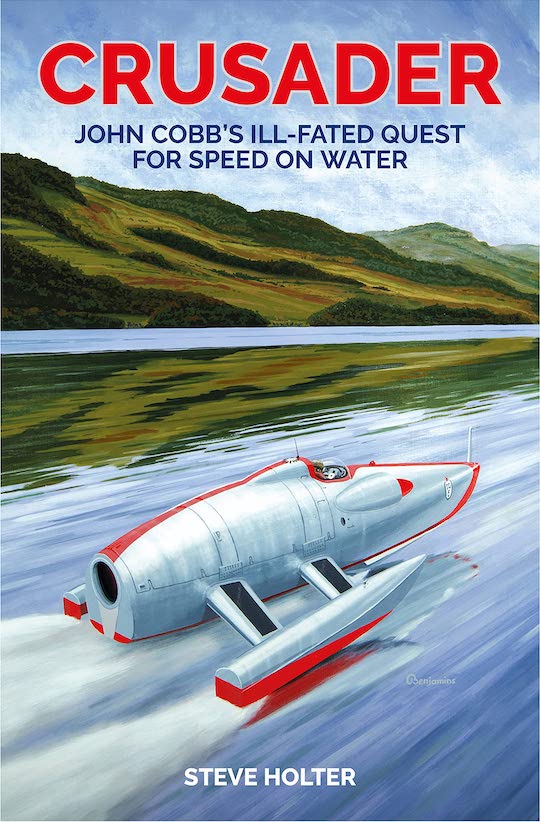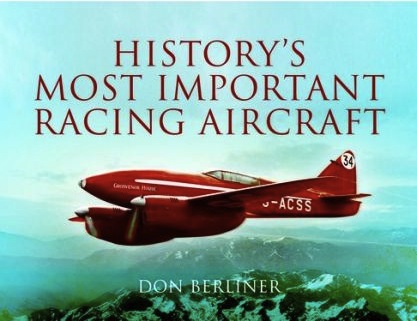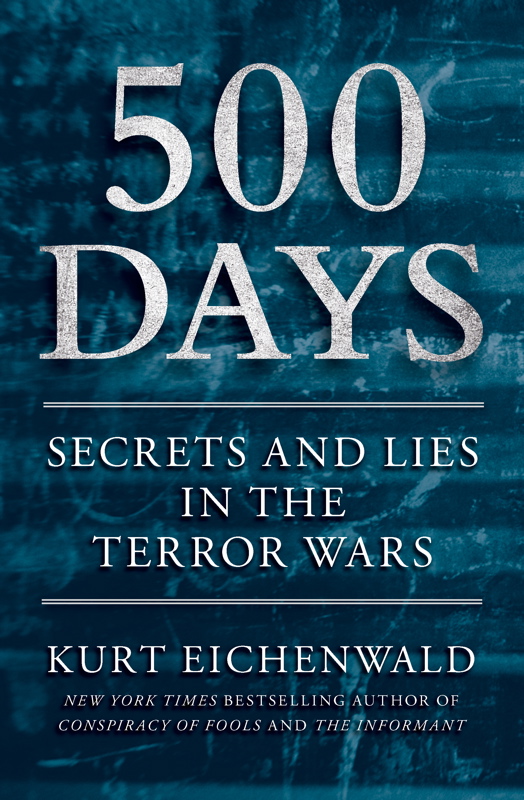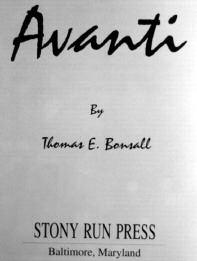Crusader, John Cobb’s Ill-Fated Quest for Speed on Water
 by Steve Holter
by Steve Holter
If you are already aware of the basic story this book tells, you’ll perhaps understand that it may be a bittersweet read. It is carefully researched and written with equal care laying out all the details of what would be the last project undertaken by a British gentleman, often referred to as a “gentle giant,” named John Cobb.
With the twenty-twenty hindsight provided by his forensic research, author Steve Holter was able to reconstruct step-by-step all that led up to that fateful day including the various errors, oversights, or omissions that culminated in the destruction of the Crusader speedboat and Cobb’s demise.
Some of what Steve Holter has examined all these years later had been available to Karl Ludvigsen for his biography of another of the main players in Cobb’s story; that man was Cobb’s good and longtime friend and brilliant engineer Reid Railton. That two-volume boxed set on Railton, from the same publisher as this book, was published in 2019. In it Ludvigsen cites numerous passages used with Holter’s permission from his Quiet Giant, which was the name of the then-unpublished manuscript that would become this book, Crusader.
John Rhodes Cobb (1899–1952) was by all accounts a very nice man; quiet, unassuming, well-born and -educated and who also proved himself a capable businessman working in the family businesses. He had a sporting spirit although not competitive. He wasn’t interested in racing against others but rather sought speed records, first on land and then on water. And he had the assets to enable him to commission the design and construction of the vehicles with which to attempt to achieve his goals.
First Cobb tackled the land speed and that’s when Reid Railton came into his life for Reid had already worked on the vehicle with which Malcolm Campbell had achieved his records so Cobb approached Railton to design and oversee construction of a vehicle for him. From that point on, the two found themselves totally compatible. Once successful on land, Cobb wanted to do the same on water with Railton again the designer of his record-contending craft.

Railton (l) and Cobb.
Holter’s interests, education, and profession combined to give him some tools, disciplines really, particularly suited to forensic-type research. He’s always been car-centric. Trained as an engineer, when he met a man he often calls his mentor, it cemented his interest in learning all he could about record breaking. Ken Norris, designer of land speed challenging car Bluebird, was only too pleased to help tutor. His and Norris’ friendship eventually inspired Holter to write the 2002-published Leap into Legend: Donald Campbell and the Complete Story of the World Speed Records.
That set the stage, so to speak. Having worked as an investigator into the cause of various crashes, and now deeply involved in record breaking attempts, Holter embarked on learning all he could about what really happened to Cobb’s Crusader and eventually gained access to Reid Railton’s files and paperwork as well as those of Cobb. Additionally he watched and analyzed period newsreel films and, importantly, was given access to the files of Vosper, the company that had constructed Crusader. He painstakingly organized all the information chronologically along with interviewing those who were able to tell him their own first-hand parts of the story.
Interestingly, numerous documents and letters are presented visually in their original form, as can be seen in the image below of a page in the book, while Holter also contextualizes their content into the narrative. That narrative isn’t limited to the events and the paper trail documentation for Holter proves to be a wise judge of the character of people, even those he’s never met.

Setting aside the reality of the sad ending of John Cobb, Holter’s book Crusader is an excellent and very readable presentation of his findings. At no point, as he writes, did he have any preconceived notions or want to seek to place fault. His goal was to research, evaluate, and share his findings. And that is exactly what he has achieved on the pages of Crusader leaving it to the reader to draw his or her own conclusions.
On a lighter note, as your commentator was keying the foregoing, a new and by all reports more intensive than ever investigation of Scotland’s Loch Ness was underway. Loch Ness is—due to its 23-mile length, light prevailing winds and calm waters—where Crusader was run as it sought record speed on water. This search was for any signs of Loch Ness’ monster, stories of which have circulated for, literally, centuries. (Plenty of info on the web; go hunting yourself.)

Copyright 2023 Helen V Hutchings, SAH (speedreaders.info)


 RSS Feed - Comments
RSS Feed - Comments






































































 Phone / Mail / Email
Phone / Mail / Email RSS Feed
RSS Feed Facebook
Facebook Twitter
Twitter
Many thanks for your kind comments, much appreciated.
Excellent article on an excellent book. Next time, please do not hesitate to extol the virtues of an equally excellent front cover especially done for this book.
Thank you.
Arthur Benjamins